Tristan da Cunha, a remote volcanic island in the South Atlantic Ocean, is home to a unique bird community that has evolved in isolation over millions of years.
The island’s small size, harsh climate, and rugged terrain have provided a distinct habitat for a number of bird species that cannot be found elsewhere in the world.
The natural beauty and endemic species of birds have made this archipelago a popular tourist destination for bird lovers and nature enthusiasts alike.
In this article, we will take a closer look at the birdlife in Tristan da Cunha and explore the challenges faced by these feathered inhabitants in the present day.
1. White-Bellied Storm Petrel

The White-bellied Storm Petrel is a small seabird that can be found in many different places around the world such as Angola, Argentina, Australia, Brazil and more.
Its natural habitat consists of open seas. It was formally described by French ornithologist Louis Jean Pierre Vieillot back in 1818.
This species has black upperparts with white underparts including its breast and belly which gives it an overall greyish appearance when seen from afar.
They are mostly observed flying low over the sea surface or hovering above waves foraging for food during low tide periods; their diet mainly consisting of crustaceans like squid and shrimp along with fish larvae too.Scientific classification:
| Kingdom | Animalia |
| Phylum | Chordata |
| Class | Aves |
| Order | Procellariiformes |
| Family | Oceanitidae |
| Genus | Fregetta |
| Species | F. grallaria |
Also Featured In: Beautiful Brazilian Birds,
2. Sooty Albatross
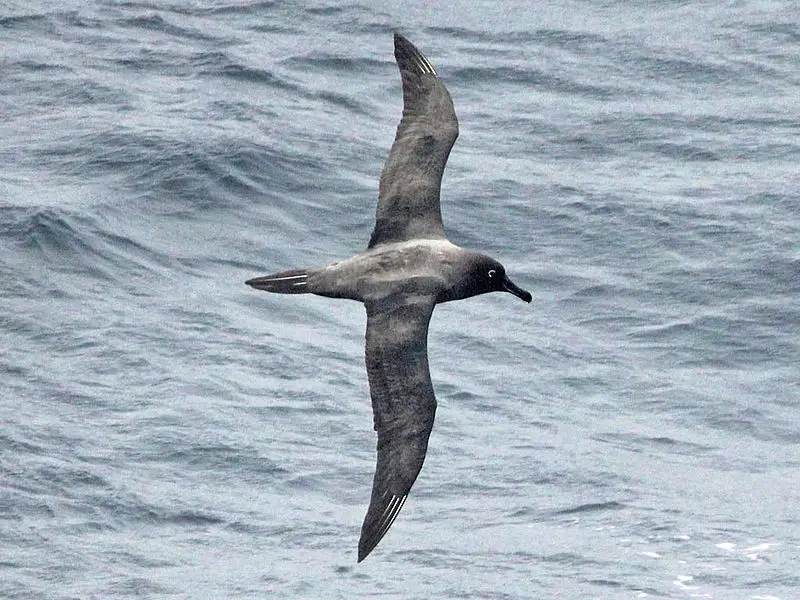
The Sooty Albatross is a species of bird in the albatross family, belonging to the order Procellariiformes. It is also known as Dark-mantled or Black-mantled Albatross.
They breed on sub-Antarctic islands and range at sea across the Southern Ocean from South America to Australia.
The sooty albatross stands out due to its dark brown plumage which appears almost black against sunlight when flying above water surface.
These birds feed mainly on fish but have been recorded eating squid, crustaceans and even carrion occasionally.
In terms of behavior, they are social creatures that often forage near fishing boats as well as congregating around floating objects like buoys or logs with other seabirds looking for food scraps left behind by them.
Overall, the sooty albatrosse lives an interesting life in southern hemisphere’s oceans while providing us with spectacular views during flight.Scientific classification:
| Kingdom | Animalia |
| Phylum | Chordata |
| Class | Aves |
| Order | Procellariiformes |
| Family | Diomedeidae |
| Genus | Phoebetria |
| Species | P. fusca |
Also Featured In: Common birds in Mozambique ,
3. Red-Gartered Coot
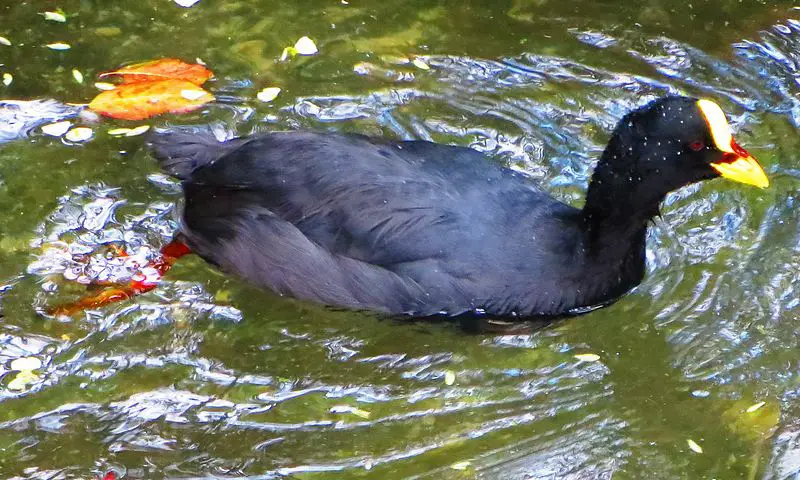
The Red-gartered Coot is a species of rail found in Argentina, Brazil, Chile, Paraguay and Uruguay. It’s about 17 to 20 inches long with both sexes looking the same.
They have a yellow bill along with a frontal shield that has an eye catching patch of red between it and its forehead. The wings are blackish brown while the tail feathers are dirty white or grayish color on top and reddish underneath.
Their legs also feature bright red garters just above their toes which gives them its name – Red-Gartered Coot. These birds inhabit wetlands where they feed mainly on plants such as grasses and sedges but may take some invertebrates too when available.
Despite being of least concern according to IUCN they face threats from habitat destruction due to human activities like farming practices so conservation efforts need be taken for these beautiful creatures.Scientific classification:
| Kingdom | Animalia |
| Phylum | Chordata |
| Class | Aves |
| Order | Gruiformes |
| Family | Rallidae |
| Genus | Fulica |
| Species | F. armillata |
Also Featured In: Most Common Birds Found in Chile,
4. Paint-Billed Crake
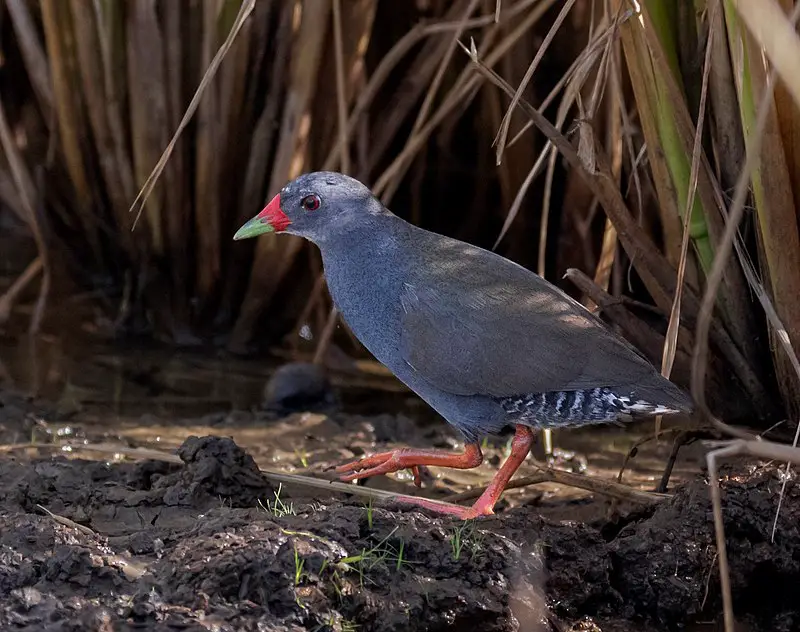
The Paint-billed Crake is a species of bird found in Central and South America, as well as the Galápagos Islands.
This member of the Rallidae family is characterized by its bright red bill and grayish brown plumage with white spots on each individual feather.
It prefers to stay hidden amongst dense vegetation near fresh water sources such as marshes or swamps, where it feeds mainly on insects and other small invertebrates like snails or molluscs.
Despite being relatively widespread across its range, this species remains elusive due to its secluded nature; making sightings quite rare for human observers.
The genus Neocrex was created specifically to house this remarkable bird.Scientific classification:
| Kingdom | Animalia |
| Phylum | Chordata |
| Class | Aves |
| Order | Gruiformes |
| Family | Rallidae |
| Genus | Neocrex |
| Species | N. erythrops |
Also Featured In: Trinidad and Tobago birds, Most Common Birds in Isabela Island
5. White-Faced Storm Petrel
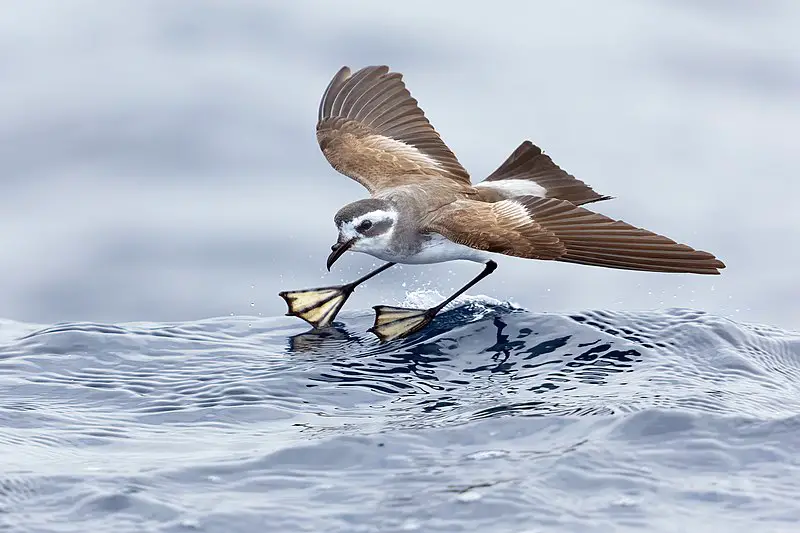
The White-faced Storm Petrel is a remarkable seabird belonging to the austral storm petrel family. It has a length of 19 to 21 centimetres and wingspan that ranges from 41 to 44 cm.
Its body is pale brown or grey, with blackish primaries in its wings and tail feathers.
The most distinctive feature is its white face which gives it an unmistakable appearance among other birds species.
These small, pelagic bird breed mainly on islands off New Zealand and Australia as well as Chile, Argentina, South Georgia and Tristan da Cunha Islands during summer season when they build their nests under rocks or burrows for laying eggs .
They feed by swimming underwater with their feet while searching for food like squid or fish near the surface of water.
In winter these birds migrate southwards where they spend time away from breeding grounds in order to survive cold weather conditions at higher latitudes.Scientific classification:
| Kingdom | Animalia |
| Phylum | Chordata |
| Class | Aves |
| Order | Procellariiformes |
| Family | Oceanitidae |
| Genus | Pelagodroma Reichenbach, 1853[2] |
| Species | P. marina |
Also Featured In: Cabo Verde birds, Birds that Live in the Ocean
6. Atlantic Petrel
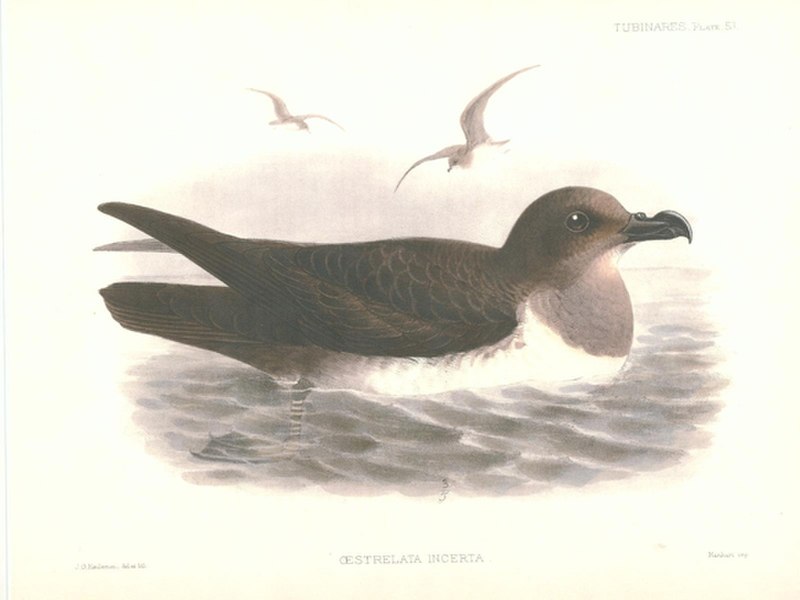
The Atlantic petrel is a large and stocky dark-colored seabird that can be found in the South Atlantic Ocean. It breeds in huge colonies on Tristan da Cunha and Gough Island, ranging from Brazil to Namibia at sea.
Most records of these birds exist to the west of their breeding islands along the subtropical convergence line.
Standing about 43 cm high, they are powerful flyers with white bellies and black wings tipped with white spots; underwings have an “M” pattern when viewed from above while flying overhead.
They prefer offshore waters over open ocean but will occasionally come to shore for rest or food during migration times as well as nesting season when it arrives.Scientific classification:
| Kingdom | Animalia |
| Phylum | Chordata |
| Class | Aves |
| Order | Procellariiformes |
| Family | Procellariidae |
| Genus | Pterodroma |
| Species | P. incerta |
7. Telluraves
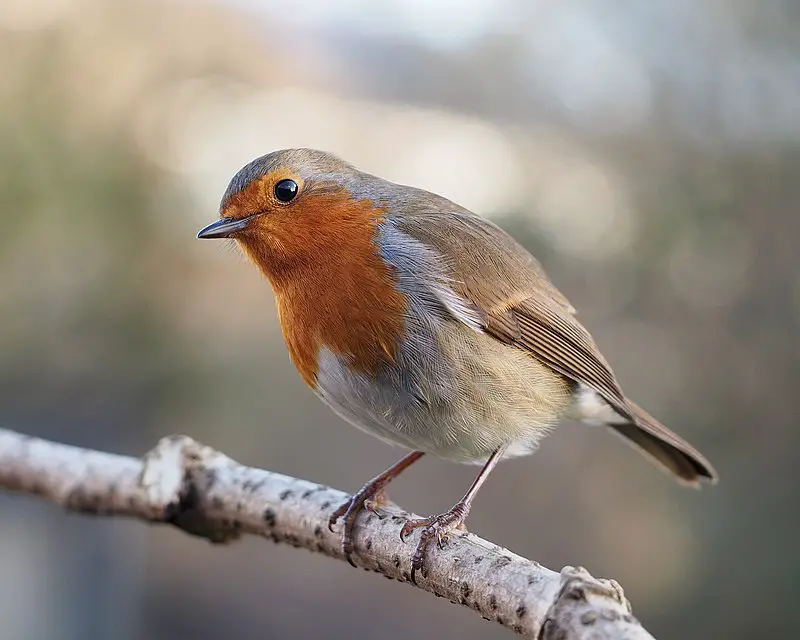
Telluraves are a recently identified clade of birds, which can be distinguished by their arboreal lifestyle. They include the australavians, such as passerines, parrots and falcons; and afroavians – eagles, hawks, buzzards and vultures.
This diverse group is united genetically thanks to recent studies showing they share similar DNA sequences.
Telluraves are an important part of many ecosystems around the world due to their essential roles in pollination or predation on other animals that form part of food webs.
These landbirds have various adaptations for life amongst trees including strong claws for clinging onto branches while hunting or nesting; large wings suited to soaring over wide areas; long tails aiding maneuverability whilst flying between trees.
Crests used both in courtship displays and species recognition within flocks; stout bills adapted for tearing prey apart quickly when feeding young chicks at nests high up from predators below.Scientific classification:
| Kingdom | Animalia |
| Phylum | Chordata |
| Class | Aves |
| Clade | Neoaves |
| Clade | Passerea |
| Clade | Telluraves Yuri et al., 2013 |
Also Featured In: Seychelles birds,
8. Antarctic Prion
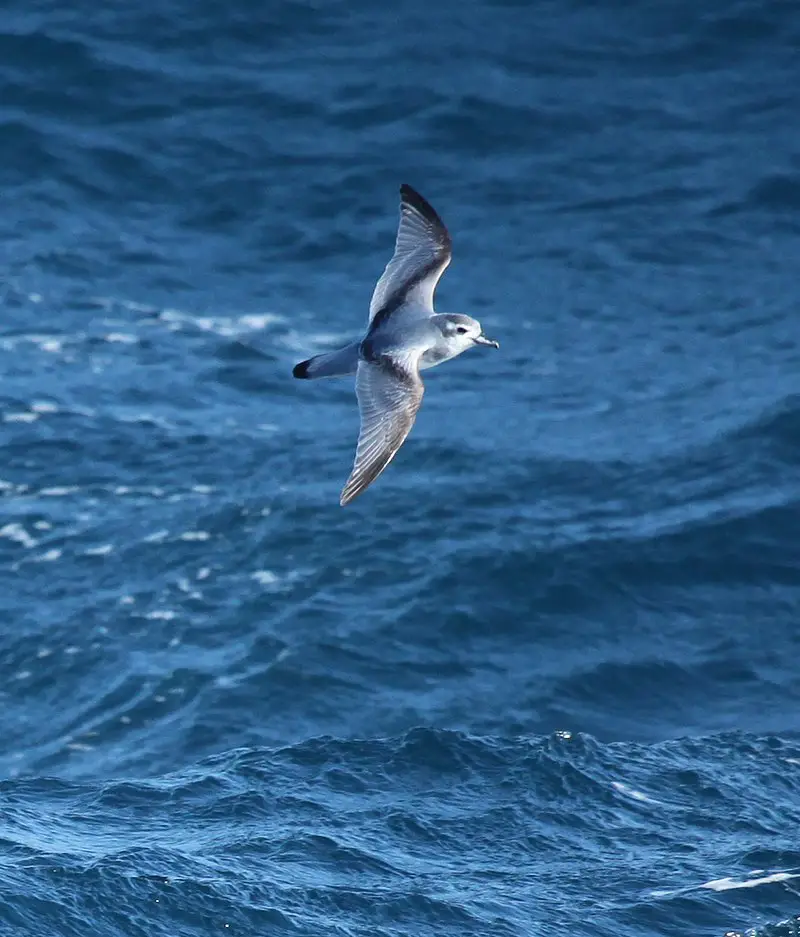
The Antarctic Prion is the largest of all prions, a genus of small petrels found in the Southern Ocean.
It was first described by German naturalist Johann Friedrich Gmelin in 1789 as part of an updated edition to Carl Linnaeus’ “Systema Naturae” and placed with other petrels under his own Pro genus.
The bird has two distinct morphs – one dark gray-brownish back color and another lighter gray morph that can be spotted during migrations across different parts of Antarctica’s coastlines.
Its diet consists mainly of crustaceans and fish which it scoops up while flying through surface waters on its long wingspan.
While they are often seen alone or in pairs, large groups may also form when feeding near krill concentrations or human settlements such as research stations around Antarctica’s coasts.Scientific classification:
| Kingdom | Animalia |
| Phylum | Chordata |
| Class | Aves |
| Order | Procellariiformes |
| Family | Procellariidae |
| Genus | Pachyptila |
| Species | P. desolata |
Also Featured In: Antarctica Birds, Tundra Birds
9. White-Chinned Petrel
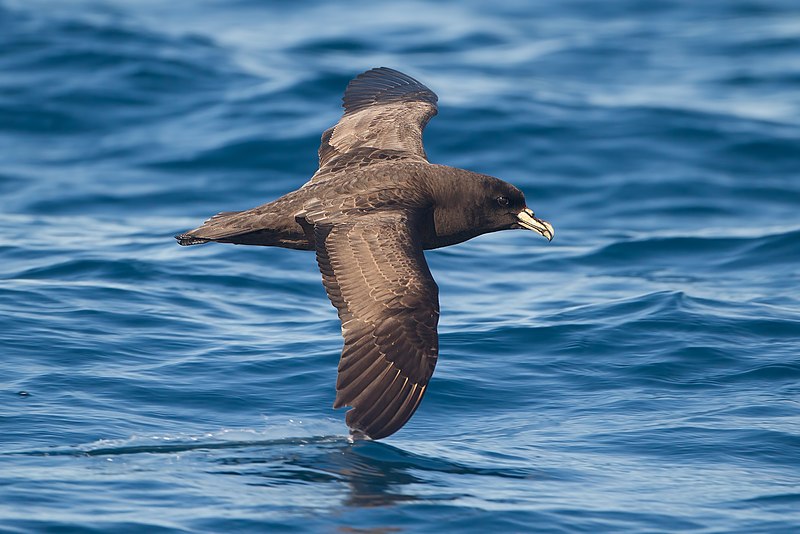
The White-chinned Petrel is a large seabird belonging to the Procellariidae family. It can be found in oceans around the Southern Hemisphere, ranging from Australia to Peru and Namibia.
These birds breed colonially on scattered islands and are sometimes known as Cape hens or Shoemakers.
They have unique white chins that distinguish them from other petrels, such as their former conspecies Spectacled Petrel.
Their wingspan averages about 115 cm across and they travel up to 4400 km during migration season.
The White-chinned Petrel feeds mainly on small fish, squid and zooplankton; it dives into the ocean for its prey using its strong webbed feet.
This species has an impressive lifespan of more than 35 years – making these majestic creatures some of our oldest avian companions.Scientific classification:
| Kingdom | Animalia |
| Phylum | Chordata |
| Class | Aves |
| Order | Procellariiformes |
| Family | Procellariidae |
| Genus | Procellaria |
| Species | P. aequinoctialis |
Also Featured In: Patagonia Birds You Should Know, Welcome Islands Birds You Need To Know
10. Slender-Billed Prion
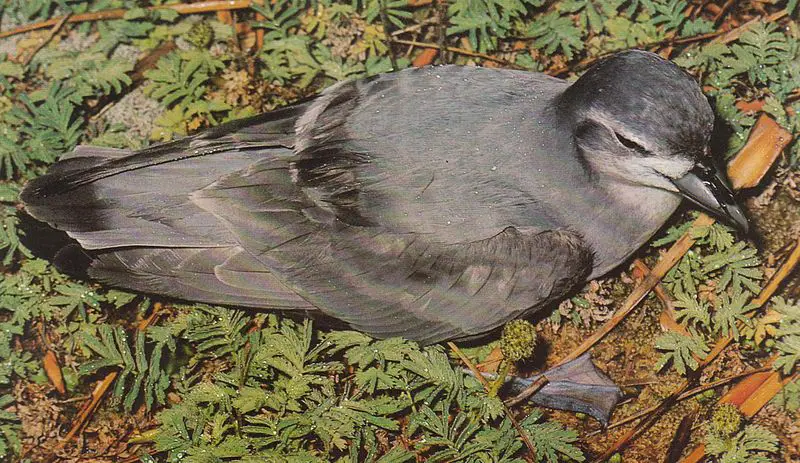
The Slender-billed prion is a species of seabird found in the southern oceans. It was formally described and named by Australian ornithologist Gregory Mathews in 1912 under its binomial name Heteroprion belcheri, before being placed with other prions in the genus Pachyptila.
This unique bird has slender bills that are adapted for filtering food from seawater as well as a long wingspan which helps them to soar over large distances when migrating or searching for prey.
They mostly feed on small fish, squid, crustaceans and jellyfish but have also been known to eat carrion if necessary.
The Slender-billed Prion’s feathers are typically dark greyish brown above and white below, blending into their natural oceanic environment perfectly.Scientific classification:
| Kingdom | Animalia |
| Phylum | Chordata |
| Class | Aves |
| Order | Procellariiformes |
| Family | Procellariidae |
| Genus | Pachyptila |
| Species | P. belcheri |
Also Featured In: South Shetland Islands Birds You Need To Know,
11. Black-Bellied Storm Petrel
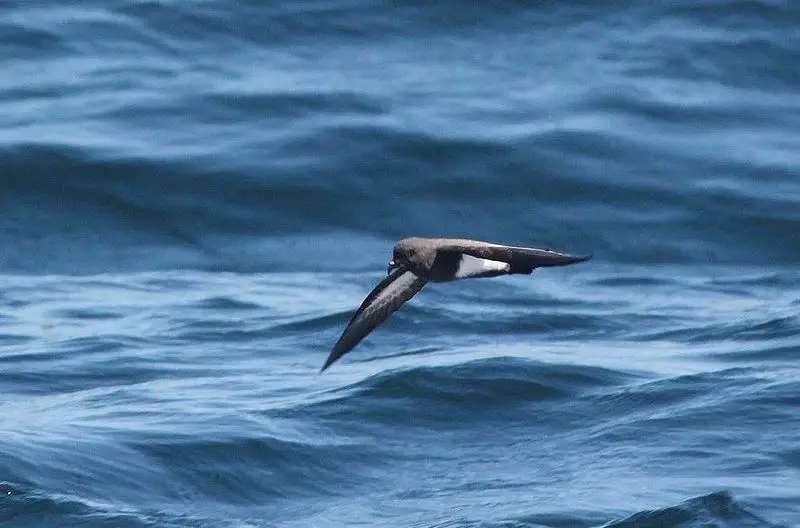
The Black-bellied Storm Petrel is a species of seabird belonging to the Oceanitidae family. It can be found in Antarctica, Argentina, Australia, Bouvet Island and many other countries in South America and Africa.
These birds are mainly dark brown with white bellies that have black markings on them. They feed primarily on small fish but will also take crustaceans such as krill or squid when available.
During breeding season they form colonies along rocky coasts where they lay one egg per year which hatch after about 40 days of incubation by both parents.
The fledglings then stay for around two weeks before taking flight for the open seas. This oceanic bird has an impressive range making it quite a common sight near coastlines all over the world.Scientific classification:
| Kingdom | Animalia |
| Phylum | Chordata |
| Class | Aves |
| Order | Procellariiformes |
| Family | Oceanitidae |
| Genus | Fregetta |
| Species | F. tropica |
Also Featured In: Black Birds in New Zealand, Common Birds of Weddell Island
12. Broad-Billed Prion
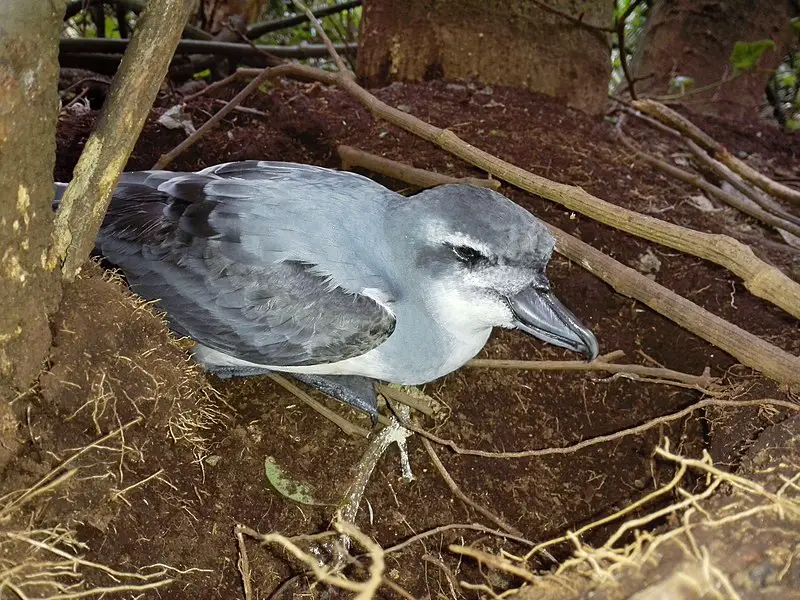
The Broad-billed Prion is an impressive seabird with a wingspan of up to 28 inches. Its grey upperparts are contrasted by white underparts and both sexes look alike.
It inhabits the southeast Atlantic Ocean, near the Antarctic Convergence all the way to New Zealand.
They breed mainly on Tristan da Cunha and Gough Islands in South Atlantic; as well as South Pacific areas such as Macquarie Island, Chatham Islands, Auckland Islands etc.
During breeding season they build their nests out of vegetation or mud burrows dug into cliffsides or slopes.
These birds eat crustaceans and small fish which they catch while flying low over surface water at night time along coastlines.
Their population numbers have been decreasing due to marine pollution caused by human activities like fishing trawlers that often discard plastic materials which can cause entanglement for these birds leading them towards death unless rescued quickly enough.Scientific classification:
| Kingdom | Animalia |
| Phylum | Chordata |
| Class | Aves |
| Order | Procellariiformes |
| Family | Procellariidae |
| Genus | Pachyptila |
| Species | P. vittata |
13. Grey Petrel
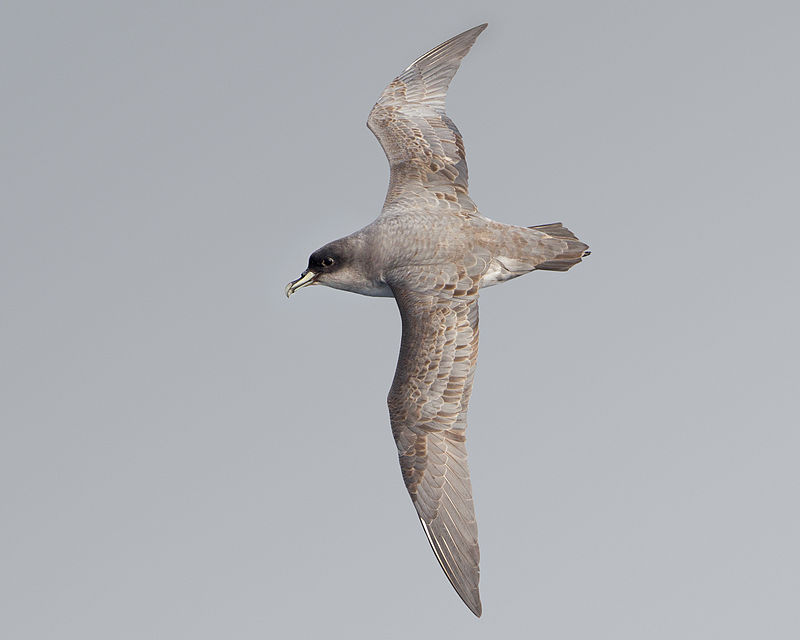
The Grey Petrel is a species of seabird in the Procellariidae family found mainly between 32°S and 58°S.
They are pelagic birds, meaning they spend most of their lives out at sea, only returning to shore for breeding season.
The bird was first formally described by German naturalist Johann Friedrich Gmelin in 1789 under its binomial name ‘Procellaria cinerea’.
It is also known as the Brown Petrel, Pediunker or Grey Shearwater due to its grey plumage and black bill with yellow tip.
Its wingspan can reach up to 68 cm long and it feeds on small fish such as sardines or anchovies which it catches close to the surface of water while flying low over ocean waves.Scientific classification:
| Kingdom | Animalia |
| Phylum | Chordata |
| Class | Aves |
| Order | Procellariiformes |
| Family | Procellariidae |
| Genus | Procellaria |
| Species | P. cinerea |
Also Featured In: Beautiful Birds Found in Central Islands,
14. Great-Winged Petrel
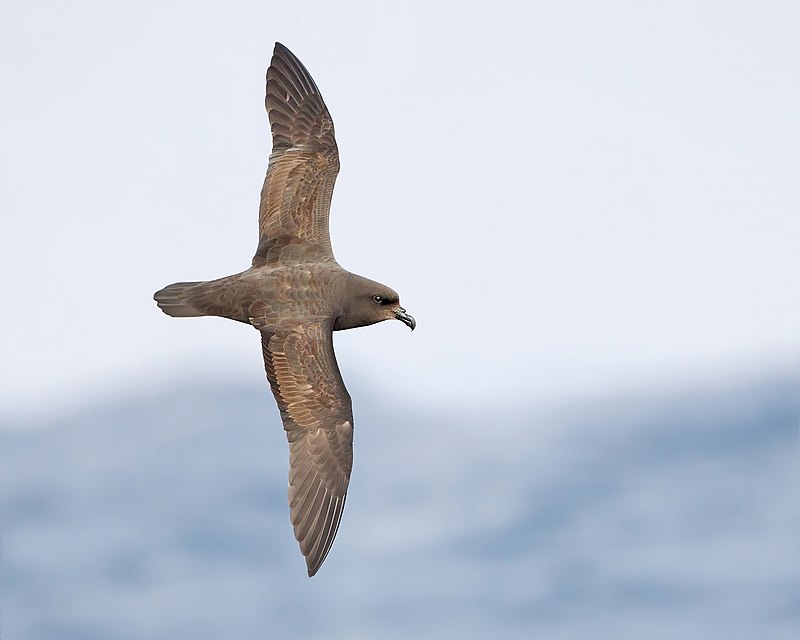
The Great-winged Petrel is a remarkable species of seabird found in the open ocean and coastal areas.
Its scientific name, Pterodroma macroptera, reflects its unique flying abilities; it has large wings that enable it to soar gracefully over long distances.
This petrel can be identified by its greyish body plumage with white underparts and tail feathers, as well as a distinctive black cap on its head.
It feeds mainly on fish but also consumes squid, crustaceans and carrion when available. In 2014 genetic research revealed that this bird actually consists of two distinct subspecies: Pterodroma m.
macroptera and Pterodroma m gouldi which are now classified as separate species – the Grey-faced Petrel (Ptererodoma gouldi).
Both have great conservation value due to their important role in some Pacific Island ecosystems where they act like scavengers helping maintain healthy populations of other marine life such as seals or sea lions.Scientific classification:
| Kingdom | Animalia |
| Phylum | Chordata |
| Class | Aves |
| Order | Procellariiformes |
| Family | Procellariidae |
| Genus | Pterodroma |
| Species | P. macroptera |
15. Soft-Plumaged Petrel
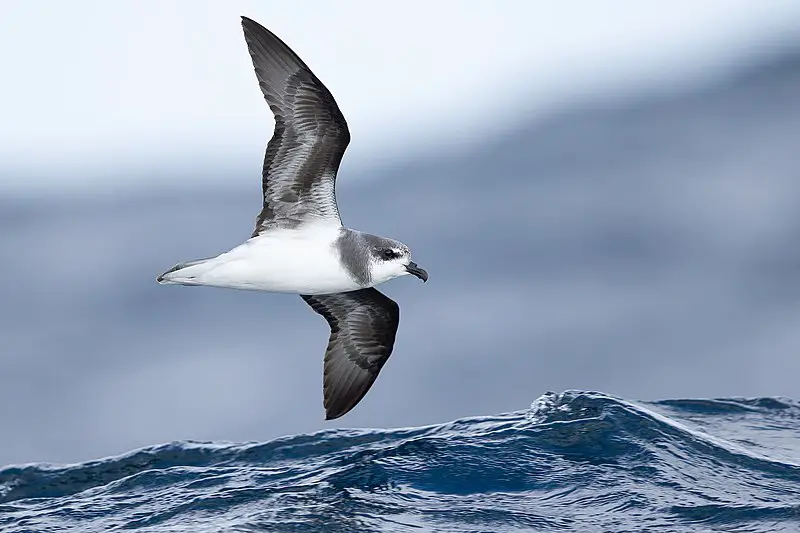
The Soft-plumaged Petrel is a species of seabird found in the Southern Hemisphere. It breeds on islands such as Tristan da Cunha, Gough Island and Macquarie Island.
Small numbers also breed in Tasmania’s Maatsuyker Island Group. This bird has soft plumage which helps it blend into its environment when at sea or nesting colonies.
It feeds mainly on fish, squid and crustaceans while out hunting over the open ocean during daylight hours then returns to its nest burrow after nightfall with food for its young ones back home.
The petrel nests underground where it will lay around one egg each year, incubating them until they hatch some months later.
Conservation efforts are helping this species thrive despite threats from introduced predators like cats, rats and mice that can easily make their way onto these remote islands if not managed properly.Scientific classification:
| Kingdom | Animalia |
| Phylum | Chordata |
| Class | Aves |
| Order | Procellariiformes |
| Family | Procellariidae |
| Genus | Pterodroma |
| Species | P. mollis |
16. Northern Rockhopper Penguin
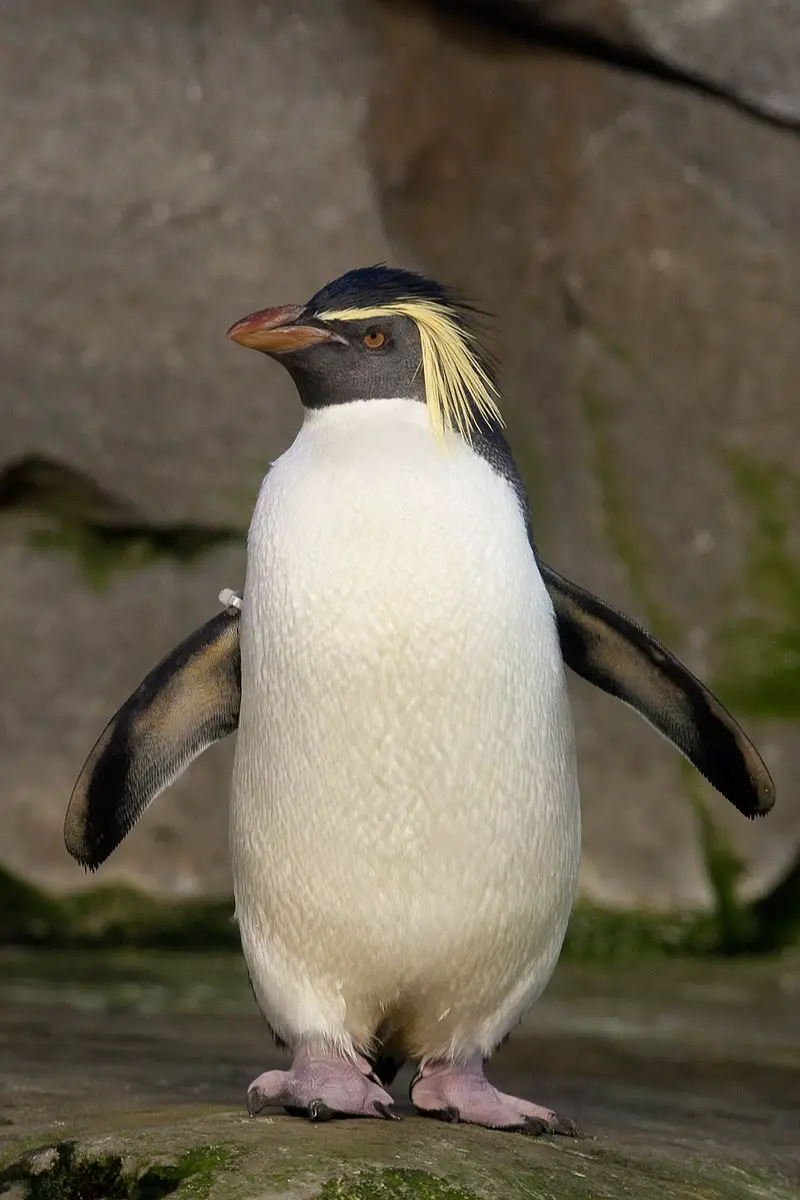
The Northern Rockhopper Penguin (Eudyptes moseleyi) is a species of penguin native to the southern Indian and Atlantic Oceans. It is distinct from its cousin, the Southern Rockhopper Penguin.
This unique species has experienced a dramatic population decline since the 1950s; research estimates that numbers have decreased by 90%.
The main threats faced by this bird include overfishing, climate change, pollution and egg harvesting for food.
As such, conservation efforts are needed to ensure that these birds do not become extinct in our lifetime.
Furthermore their natural habitats need better protection so they can thrive without interference from humans or human-induced activities like fishing trawlers which damage their nesting grounds on shorelines around islands where they breed during certain times of year.Scientific classification:
| Kingdom | Animalia |
| Phylum | Chordata |
| Class | Aves |
| Order | Sphenisciformes |
| Family | Spheniscidae |
| Genus | Eudyptes |
| Species | E. moseleyi |
Also Featured In: Penguins Species, Gough Island Birds You Should Know
17. Tristan Albatross
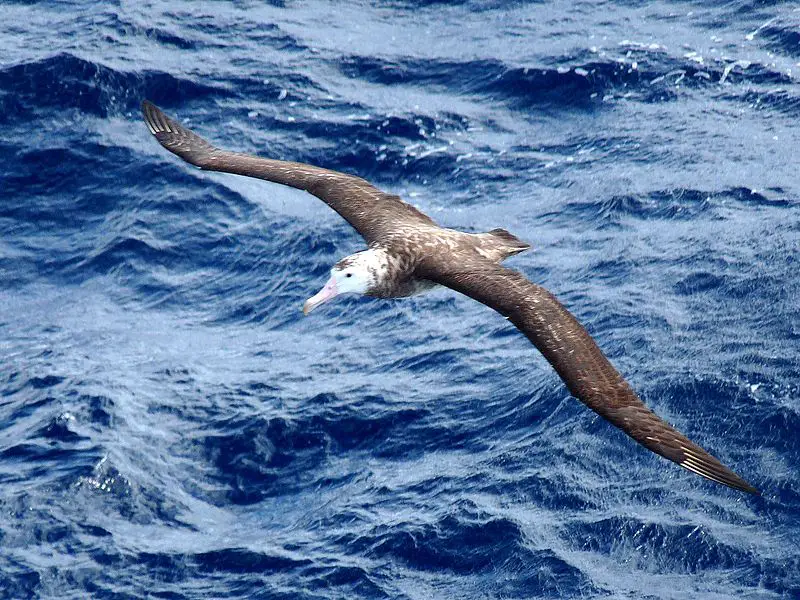
The Tristan albatross is a majestic seabird from the Diomedeidae family, classified as one of the great albatrosses in 1998.
It has special features that distinguish it from other members of its genus such as shearwaters, petrels, and storm petrels.
Its wingspan can reach up to 8 feet and it uses dynamic soaring for long-distance travel over water surfaces.
They form lifelong pairs with their mates during mating season which happens once every two years on Gough Island in South Africa where they nest until December before migrating back out to sea again after breeding.
The diet mostly consists of squid but some species also feed on fish or krill depending on what’s available at any given time.
These birds are considered very intelligent due to their ability to remember food sources and migrate accordingly each year without fail despite having no visual landmarks along the way.Scientific classification:
| Kingdom | Animalia |
| Phylum | Chordata |
| Class | Aves |
| Order | Procellariiformes |
| Family | Diomedeidae |
| Genus | Diomedea |
| Species | D. dabbenena |
Also Featured In: Albatross Species,
18. Atlantic Yellow-Nosed Albatross
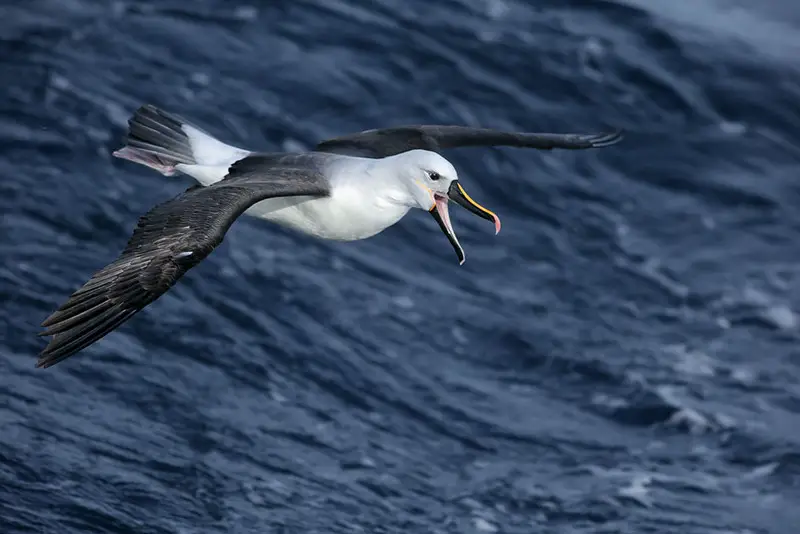
The Atlantic yellow-nosed albatross is a large seabird belonging to the albatross family Diomedeidae. It has gray and white plumage, with pale yellow markings around its nose and eyes.
This small mollymawk was once thought to be the same species as Indian Yellow-Nosed Albatross, but now it is recognised as distinct.
Its diet consists of squid, fish eggs and other marine creatures that can be found near the surface of the ocean.
It nests on islands off coastlines in southern Africa and South America during breeding season from October to April each year.
The Atlantic yellow nosed albatrosses are typically solitary birds yet they will congregate at nesting sites for mating purposes or form feeding flocks when food becomes abundant in an area..
They have been classified vulnerable by IUCN due their decreasing population numbers caused by fishing activities which entangle them accidentally into nets.Scientific classification:
| Kingdom | Animalia |
| Phylum | Chordata |
| Class | Aves |
| Order | Procellariiformes |
| Family | Diomedeidae |
| Genus | Thalassarche |
| Species | T. chlororhynchos |
Also Featured In: Endangered Birds of New Zealand, Birds That Live around East Falkland
19. Tristan Thrush
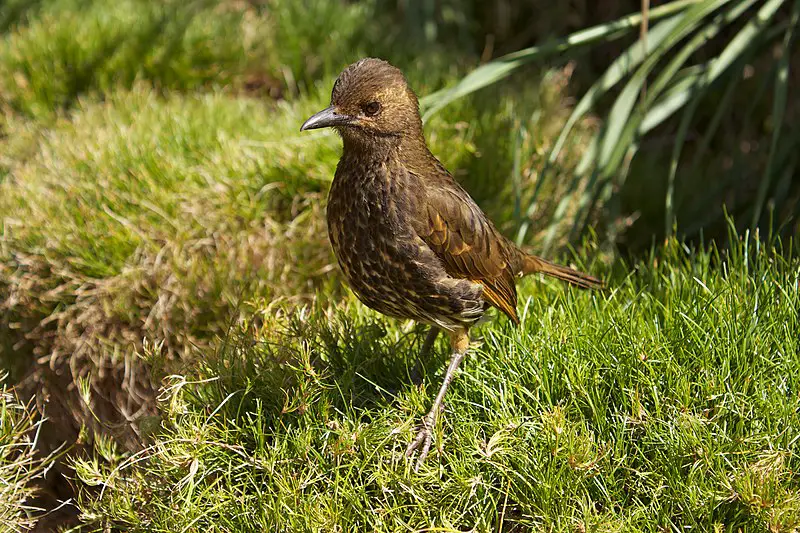
The Tristan thrush is a unique species of bird, endemic to the remote archipelago of Tristan da Cunha in the South Atlantic Ocean.
It was first described by John Gould as being similar in size and appearance to the song thrush, with Henry Moseley noting its very dark colouration.
Its plumage is brown-black or ash grey in colour, featuring white spots on its wings and tail feathers which can be seen when it flies.
The Thrush feeds mainly on insects but also eats small fruits and berries from shrubs found around the islands.
This species has adapted well to living among humans due to their friendly nature; they often forage near human settlements looking for food scraps or handouts.
Although these birds are not threatened at present, their population numbers remain relatively low due to habitat destruction caused by invasive plant species introduced by sailors over time impacting upon this beautiful island bird’s home range.Scientific classification:
| Kingdom | Animalia |
| Phylum | Chordata |
| Class | Aves |
| Order | Passeriformes |
| Family | Turdidae |
| Genus | Turdus |
| Species | T. eremita |
Also Featured In: Thrush Species, Ocean Island Birds You Didn’t Know
20. Rufous-Chested Plover
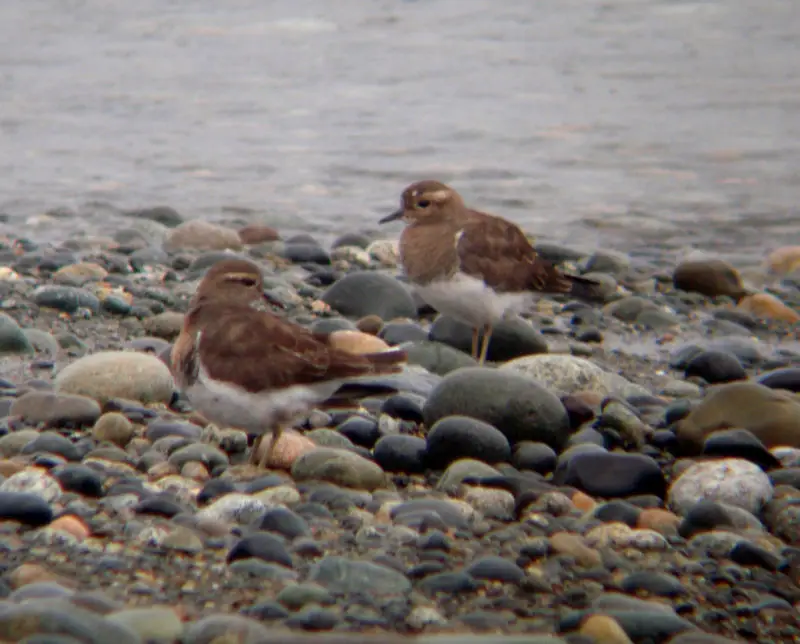
The Rufous-chested plover, also known as the Rufous-chested dotterel, is a bird species found in Argentina, Brazil, Chile, Uruguay, and the Falkland Islands.
Though some authors classify it in the Zonibyx genus, this treatment isn’t widely adopted. It belongs to the Charadriidae family’s Charadriinae subfamily. It is a small bird with a distinct rufous or reddish-brown chest.
Its feathers are brown and white with a black beak and legs. These birds prefer living in damp habitats like riverbanks, marshes, and wetlands. They feed on insects, worms, and small fish.
The conservation status of this species is considered “Least Concern” because its population is relatively stable.Scientific classification:
| Kingdom | Animalia |
| Phylum | Chordata |
| Class | Aves |
| Order | Charadriiformes |
| Family | Charadriidae |
| Genus | Charadrius |
| Species | C. modestus |
Also Featured In: Common Birds that Live around Ushuaia, Falkland Islands Birds You Need To Know
21. Wilkins’s Bunting
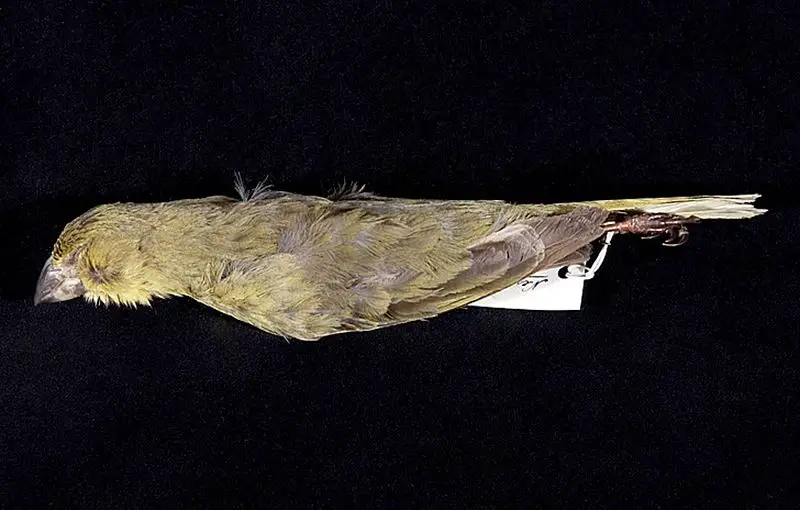
Wilkins’s Bunting, also called the Grosbeak Bunting, is a bird species found only on Inaccessible Island and Nightingale Island of the Tristan da Cunha archipelago.
It belongs to the Thraupidae family and has two subspecies – dunnei and nominate wilkinsi.
Its natural habitats are temperate regions. The bird has a unique appearance, with a stout beak that aids in its feeding habits.
Unfortunately, the population of Wilkins’s Bunting is declining due to invasive species on their island habitats.
Conservation efforts are underway to protect this rare species and preserve their natural habitats.
These efforts include removing invasive species, such as rats and mice, from the islands and improving monitoring and protection measures.
With these interventions, it is hoped that Wilkins’s Bunting will continue to thrive and avoid extinction.Scientific classification:
| Kingdom | Animalia |
| Phylum | Chordata |
| Class | Aves |
| Order | Passeriformes |
| Family | Thraupidae |
| Genus | Nesospiza |
| Species | N. wilkinsi |
22. Common Diving Petrel
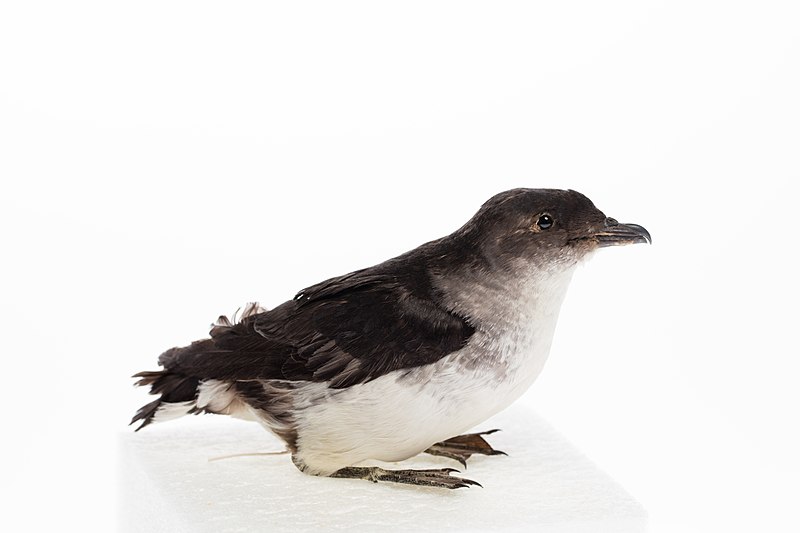
The common diving petrel is a small bird that lives in the southern oceans. It is often mistaken for an auk due to its similar appearance.
These birds are native to several islands including those in the South Atlantic and Southern Indian Oceans, as well as islands off the coasts of Australia and New Zealand.
They are excellent divers, as their name suggests, and are able to dive deep into the water to catch their prey.
Despite their small size, these birds are hardy and are able to withstand the harsh conditions of their habitat. Their populations are stable, thanks to measures taken to protect their breeding grounds.
Overall, the common diving petrel is a fascinating bird that can be found in some of the most remote and rugged parts of the world.Scientific classification:
| Kingdom | Animalia |
| Phylum | Chordata |
| Class | Aves |
| Order | Procellariiformes |
| Family | Procellariidae |
| Genus | Pelecanoides |
| Species | P. urinatrix |
Also Featured In: Most Common Birds in Stewart Island, Passage Islands Birds You Should Know
23. Little Shearwater
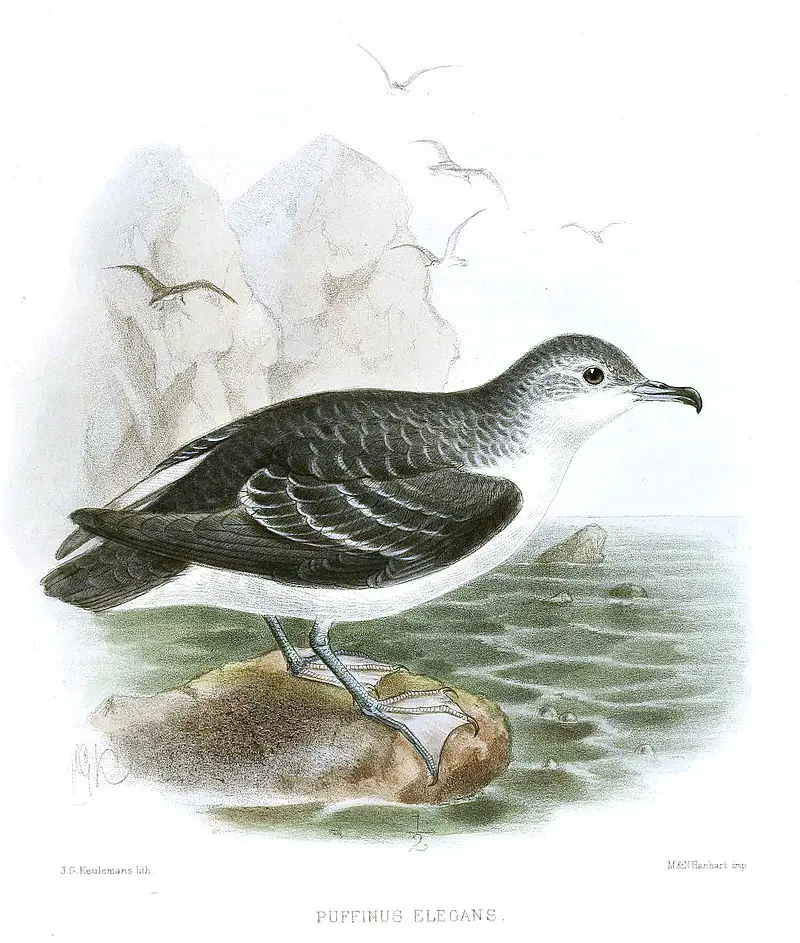
The little shearwater bird belongs to the petrel family Procellariidae. It is a burrow-nesting seabird and has a unique shearing flight pattern, where it dips from side to side on stiff wings with few beats.
Despite its name, it is not related to puffins or any other auk species. The little shearwater is small in size and has a distinctive appearance with its grayish-brown feathers and white underparts.
These birds are found in the southern hemisphere and are known for their long migratory journeys.
They are also known to forage in deep waters and feed on a variety of small fish and squid.
The conservation status of the little shearwater bird is currently listed as least concern, but its populations are threatened due to the potential impacts of climate change and human activities.Scientific classification:
| Kingdom | Animalia |
| Phylum | Chordata |
| Class | Aves |
| Order | Procellariiformes |
| Family | Procellariidae |
| Genus | Puffinus |
| Species | P. assimilis |
24. Inaccessible Island Finch
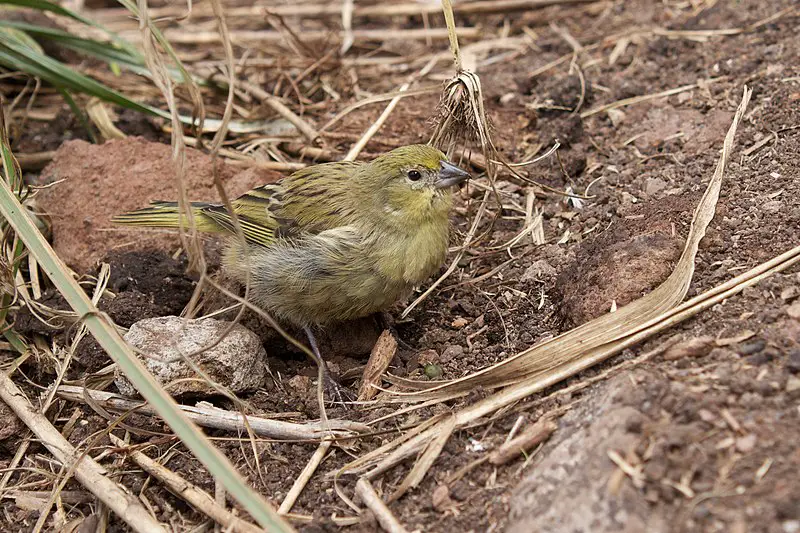
The Inaccessible Island finch, also known as the Inaccessible bunting, is a unique bird species found only on Inaccessible Island in the Tristan da Cunha archipelago.
Its natural habitats include temperate shrubland and subantarctic grassland. Unfortunately, the Inaccessible Island finch is threatened by habitat loss. Formerly classified under Emberizidae, it now belongs to the family Thraupidae.
Its scientific name is Nesospiza acunhae. It is a small bird that has adapted to its isolated environment. Its survival depends on protecting Inaccessible Island’s ecosystem.Scientific classification:
| Kingdom | Animalia |
| Phylum | Chordata |
| Class | Aves |
| Order | Passeriformes |
| Family | Thraupidae |
| Genus | Nesospiza |
| Species | N. acunhae |
25. Spectacled Petrel
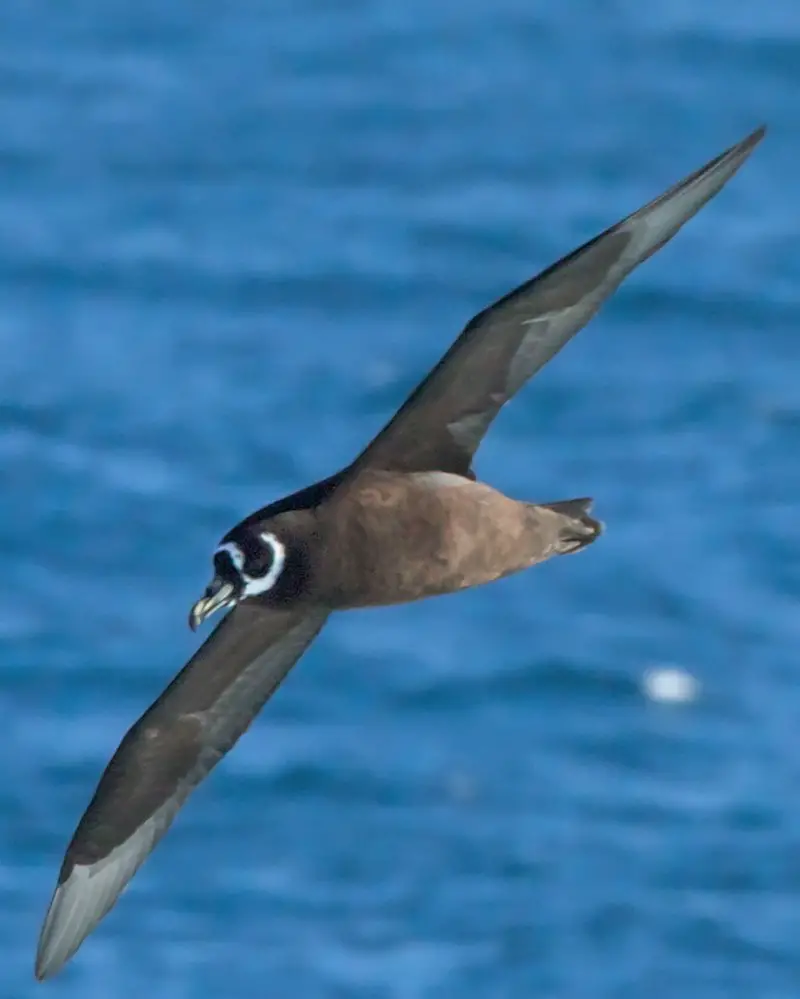
The Spectacled petrel is a seabird that is found exclusively on Inaccessible Island, located in the South Atlantic Tristan da Cunha group.
This burrowing bird is one of the largest petrels and is known for its distinctive appearance due to the markings around its eyes that resemble glasses or spectacles.
Despite its unique appearance, the Spectacled petrel was formerly considered a subspecies of the white-chinned petrel.
This rare bird is a vital part of the ecosystem on Inaccessible Island and plays an important role in the food chain.
Due to its restricted habitat and low population numbers, conservation efforts are critical to ensure the survival of the Spectacled petrel.Scientific classification:
| Kingdom | Animalia |
| Phylum | Chordata |
| Class | Aves |
| Order | Procellariiformes |
| Family | Procellariidae |
| Genus | Procellaria |
| Species | P. conspicillata |
26. Gough Moorhen
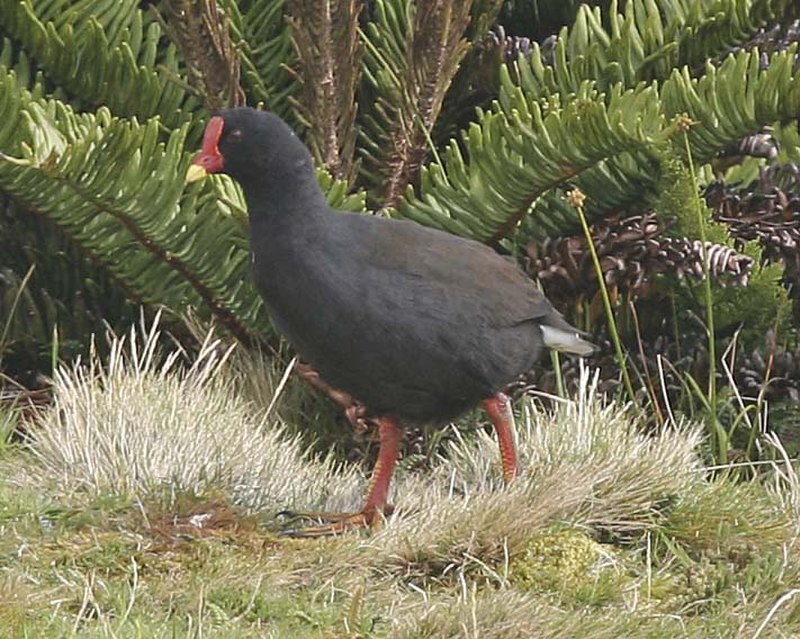
The Gough moorhen is a bird that is similar to the common moorhen but is smaller and stockier with shorter wings. It has a yellow-tipped red bill and red frontal shield.
It was first described in 1888 by polar explorer George Comer, and its specific name honors him. The Gough moorhen is a medium-sized, almost flightless bird.Scientific classification:
| Kingdom | Animalia |
| Phylum | Chordata |
| Class | Aves |
| Order | Gruiformes |
| Family | Rallidae |
| Genus | Gallinula |
| Species | G. comeri |
27. Tristan Moorhen
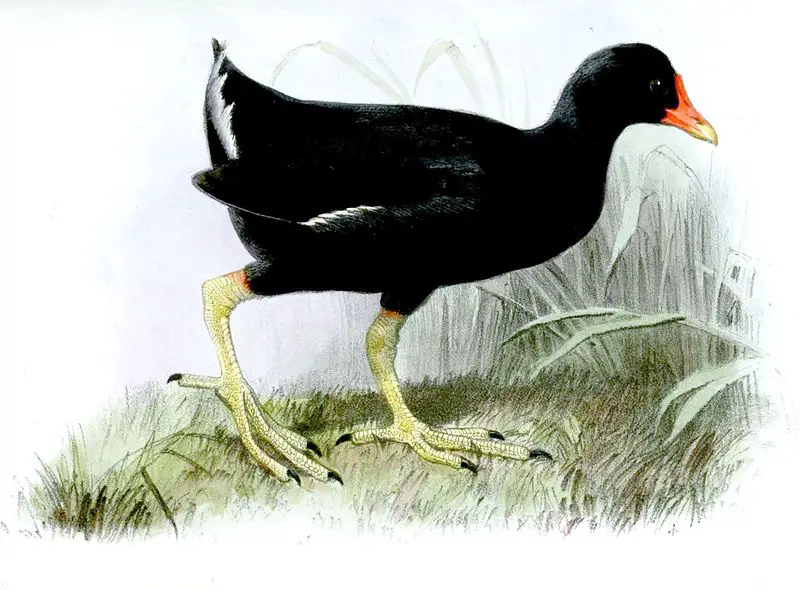
The Tristan moorhen (Gallinula nesiotis) was a flightless rail species that used to call the South Atlantic island of Tristan da Cunha home. It closely resembled the Gough moorhen, which lived on Gough Island about 400 miles away.
Although the Tristan moorhen was once abundant on the island, it became rare in 1873 and was completely extinct by the end of the 19th century.
This was primarily due to hunting and predation by introduced species. Unfortunately, we will never be able to see this unique and now extinct bird species in person.Scientific classification:
| Kingdom | Animalia |
| Phylum | Chordata |
| Class | Aves |
| Order | Gruiformes |
| Family | Rallidae |
| Genus | Gallinula |
| Species | †G. nesiotis |
28. Nesospiza
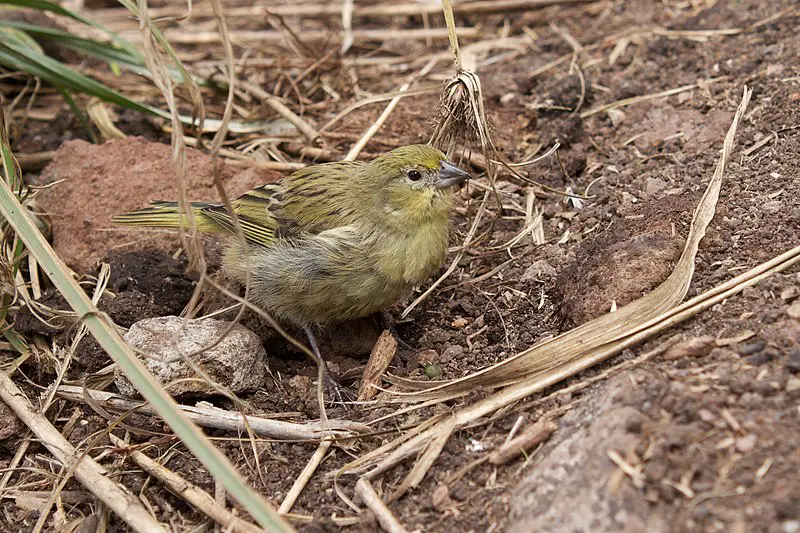
The Nesospiza is a type of seed-eating bird that belongs to the tanager family Thraupidae. It is endemic to the Tristan da Cunha archipelago, which is situated in the South Atlantic Ocean.
The genus Nesospiza was first introduced in 1873, with the Inaccessible Island finch as its type species. The name Nesospiza combines the Greek word “nēsos,” meaning island, which refers to the bird’s place of origin, and “spiza,” which means finch.
This bird species can be found exclusively in the Tristan da Cunha islands and is not found anywhere else in the world.
Being isolated in their natural habitat, the Nesospiza bird has unique features that have allowed it to survive in its environment over the years.Scientific classification:
| Kingdom | Animalia |
| Phylum | Chordata |
| Class | Aves |
| Order | Passeriformes |
| Family | Thraupidae |
| Genus | Nesospiza Cabanis, 1873 |